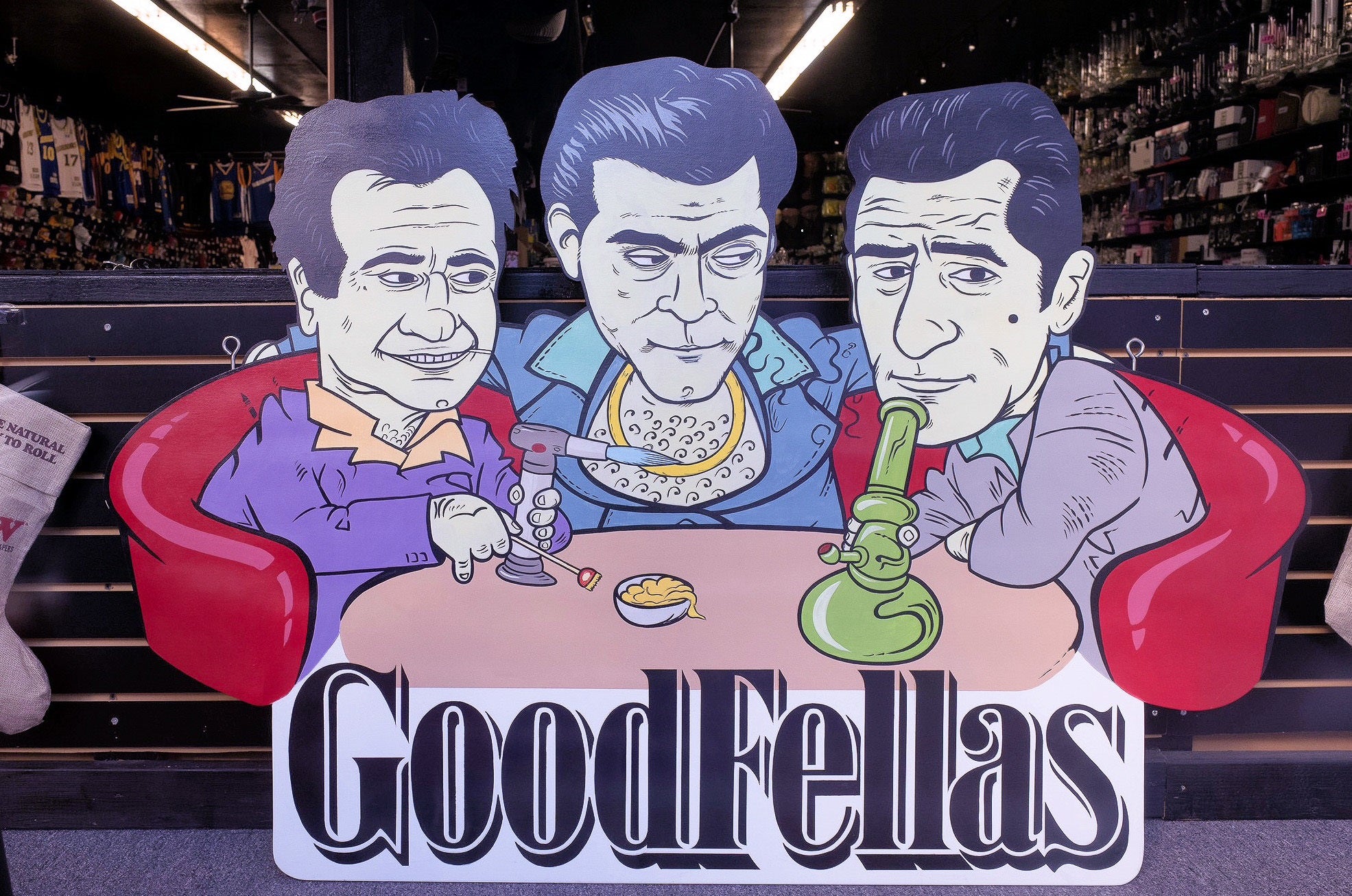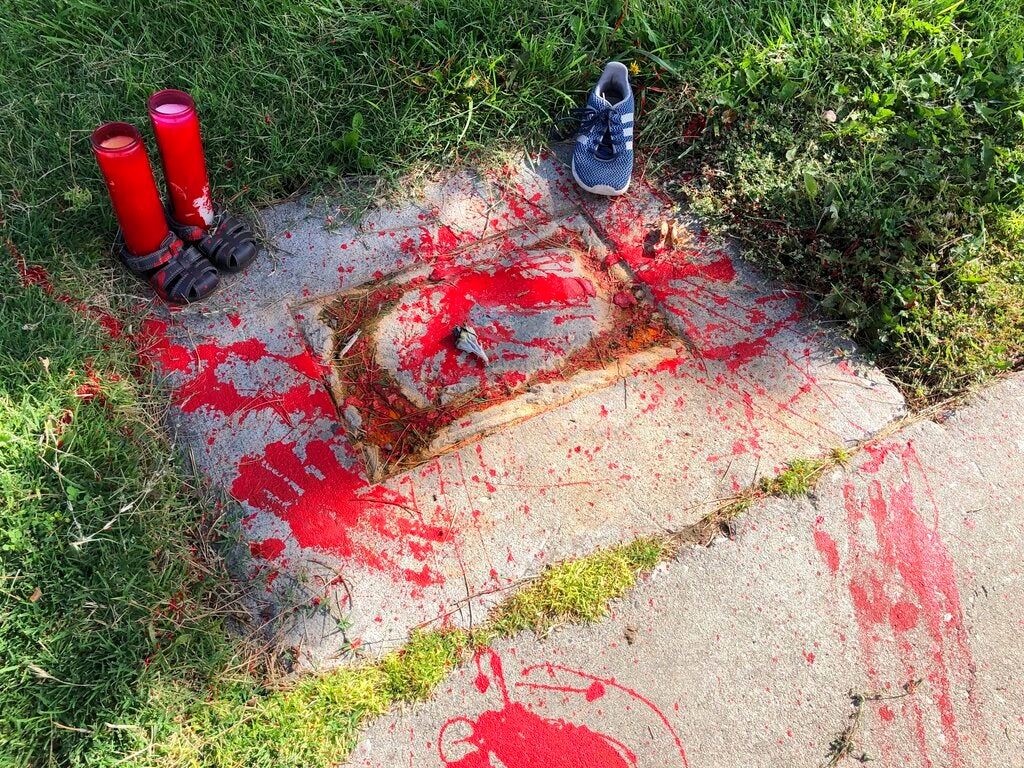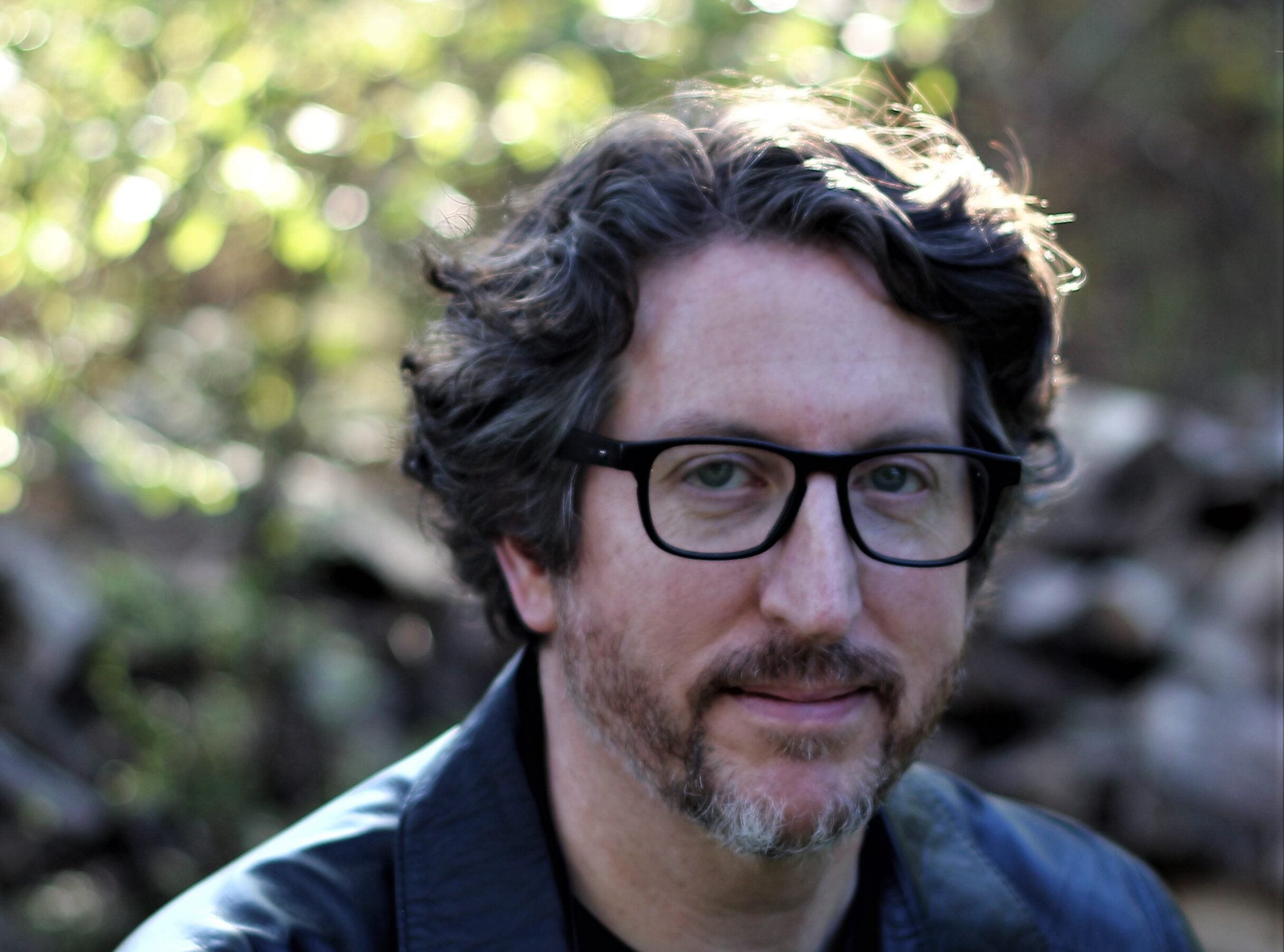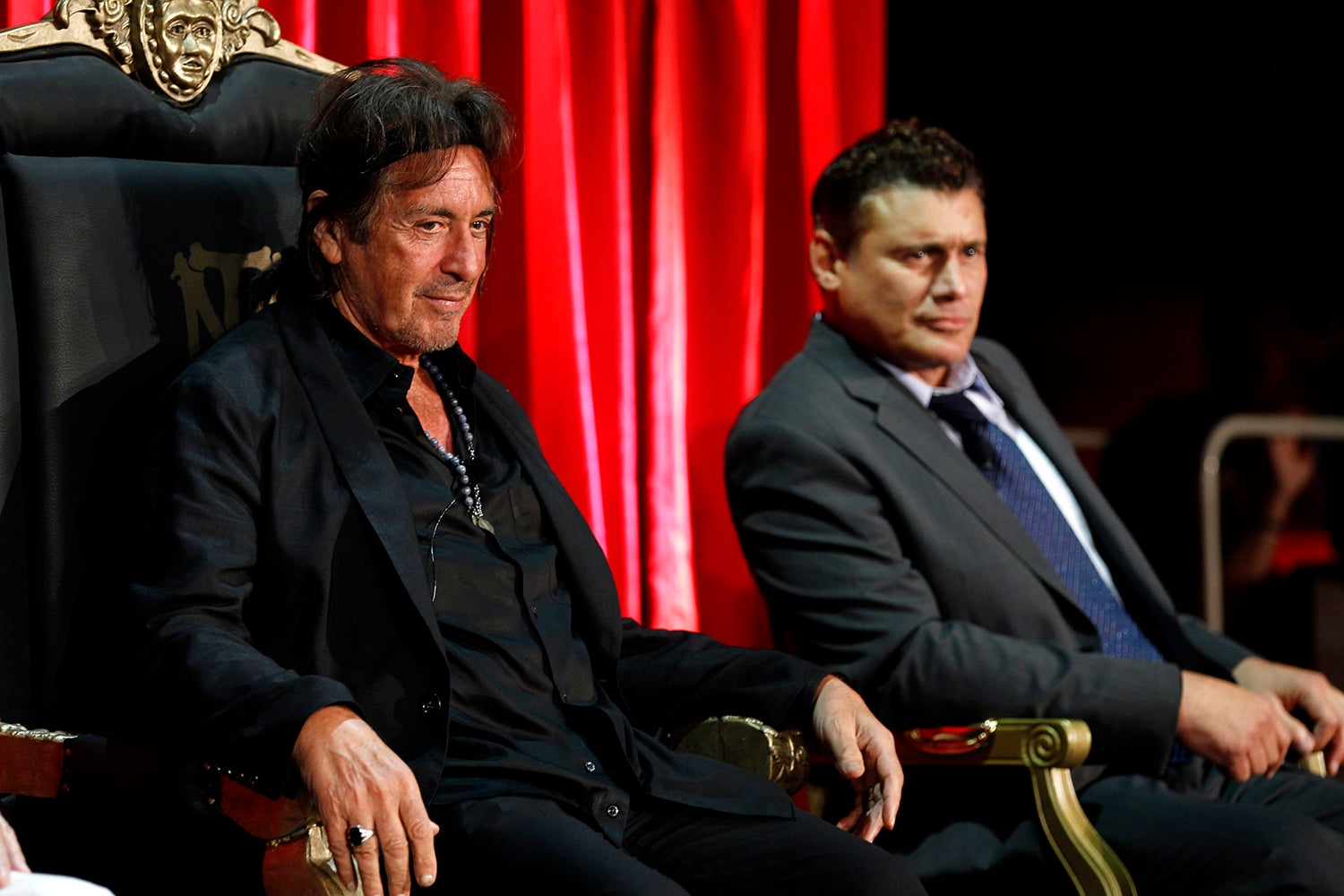Author Sharon Dolin looks at her life through the lens of Alfred Hitchcock movies. Also, Stephen Graham Jones on his horror novel, “The Only Good Indians.” And we explore the enduring appeal of “Goodfellas” with film critic Glenn Kenny.
Featured in this Show
-
Author Sharon Dolin Explores Her Life Through Lens Of Hitchcock's Films
Sharon Dolin remembers exactly when she came up with the idea for her book, “Hitchcock Blonde: A Cinematic Memoir.”
“I didn’t choose Alfred Hitchcock. Alfred Hitchcock chose me,” Dolin told WPR’s “BETA.” “I did not think I was going to write a memoir. And then I was actually ill with the flu. We all know about being feverish, especially in these COVID days. And I was running about a 103 (degree), 104 fever and I thought I would watch ‘Vertigo.’ And I was just coming down off of a very destructive affair and I was watching the movie and I thought to myself: Eureka! This could work.”
“This is so connected to what I was going through in this relationship. So it’s really about destructive, heterosexual desire. And I thought I could possibly write a memoir through the lens of Hitchcock. And I took a number of months in order to figure out that I could do it,” recalled Dolin. “(Louis) Pasteur says chance favors the prepared mind, and so my mind in its feverish haze was prepared.”
The dictionary defines “Hitchcockian” as “resembling the style of Sir Alfred Hitchcock, especially through the use of tension and suspense.” So would it be fair to say that Dolin’s life has contained a lot of tension and suspense?
“Yes. I would say very little has turned out the way I would have predicted from the time I was a small child. I trusted my mother. I loved my mother. And yet she did things that were frightening, like running away with me or when she would have a breakdown,” said Dolin. “She seemed to become another person or when she had disappearances. And I didn’t understand them entirely when she went into the hospital or when she came back and she was so drugged up, I didn’t really recognize her. So I would say from the get-go, everything in my life seemed to be unpredictable.“
Dolin’s mother had schizophrenia and her father was a traveling salesman.
“I loved them. They loved me, they adored me,” Dolin said. “And so I think it’s very important in this book to understand that you can have a parent who is severely mentally ill. And yet, I got the most important thing from her I could get, which was her really unconditional love, even though it was at times very frightening.”
Dolin said that she thinks the same was true of her father, someone she had to depend on “even though there was something rather childish about him and also unreliable. And he would go on these road trips for a month or more at a time and we would be left with my mother. And who knows what would happen with her when he was away.”
The first Hitchcock film that Dolin recalls seeing as a child is “Rear Window,” which was released in 1954. Jimmy Stewart portrays a professional photographer named L.B. “Jeff” Jefferies who, while recovering from a broken leg, spies on his neighbors and becomes convinced that his neighbor across the courtyard has murdered his wife. Grace Kelly plays Lisa Fremont, Jefferies’ girlfriend.
“Here he is (Jefferies), a voyeur looking in on other people’s lives,” Dolin said. “And when I was growing up in Brooklyn, we had windows. We lived on the first floor of a rental. And people could look in our windows. So I very much had that experience of other people spying on me.”
One such incident occurred when Dolin was about 16. She was reclining on her bed and talking to a friend on the phone. Suddenly she heard a rapping on the side door to her family’s apartment. The Dolins’ Bedlington terrier, MacDuff, started barking. Dolin exited her bedroom to discover their next-door neighbor at the entrance of their kitchen. He had a teenage boy in front of him. The neighbor was poking the barrel of a shotgun into the boy’s back. The neighbor said that he caught the boy peeping in her bedroom window. Dolins’ father told the neighbor to shoot the boy. The boy said, “No, please.” The neighbor lowered his shotgun and told the boy to get lost. The boy ray away.
“And I realized that the boy had been looking in my window while I was talking on the phone,” Dolin said. “I had this issue a lot of my life and feeling that there were people who were looking in on me. And of course, the quandary of writing this book was I was allowing people to look in on my life and I was having to deal with what that meant.”
Alfred Hitchcock sexually harassed many of the leading ladies in his films, especially Tippi Hedren, who starred in “The Birds.” She has said that Hitchcock’s behavior ruined her career. How does Hitchcock’s bad behavior affect the way Dolin views him and his films, especially in terms of the ways that the films relate to her own life?
“I very early on have made a distinction between the biographical figure of the artist and their work,” Dolin said. “What interested me was that I think he really was the most abusive and stepped over the line with Tippi Hedren. I think it was partially a class issue because she was very working-class. He wouldn’t dare to do that, I don’t believe, with Ingrid Bergman or Grace Kelly. But he felt he could get away with it with Tippi Hedren. And I think it affected ‘The Birds.’ I think in that final scene where she goes upstairs and is attacked, she’s almost blinded by the birds. And I think that he was getting out his sexual rage at her for refusing him in the movie itself. And it’s very disturbing to see that.”
-
Stephen Graham Jones' Novel Asks What It Means To Be A Good Indian
Stephen Graham Jones has been described as “the Jordan Peele of horror literature.” That got us wondering: Does this mean that Jordan Peele is the Stephen Graham Jones of horror cinema?
“I guess it could. But I’m happy being the Jordan Peele,” Jones told WPR’s “BETA.”
And why does Jones think he’s been called “the Jordan Peele of horror literature”?
“I think it’s because I know horror really well. I do horror,” he said. “But also I bring who I am into the story, onto the page. And I’m not quite happy with the way things are as regards the treatment of representation of American Indians. And so I’m always coming at that, as well as my characters are coming at a monster or a monster is coming at them.”
Jones’ latest novel is called “The Only Good Indians.” It’s about four American Indian men on the Blackfeet Reservation in Montana. They are out hunting elk the day before Thanksgiving, and they do something they shouldn’t have done. Ten years later, they learn that they’re now the ones being hunted by something from that day.
Jones explained why he chose the elk as the animal that haunts the memories of these young men.
“I guess the first reason is because their atrocity, their crime, the trespass they committed wasn’t against a single animal, it was against a herd of animals,” he said. “And you don’t very often in November come upon a whole herd of deer or white-tailed or mule deer. You will find elk bunched up together like that. So part of it’s just mechanical or logistical. But, you know, the real reason is probably just that since I was 12, I’ve been hunting elk. And when we go out for elk, we usually have mule deer and whitetail tags, too. But elk is the GOAT (Greatest Of All Time) and elk are super sneaky, super smart, super fast, super tough. When you get an elk, it’s only after a lot of hard work. And that to me makes them kind of special.”
The novel’s four main characters are Ricky, Lewis, Gabriel and Cassidy. They have an inside joke about which of their actions are the kind worthy of a good Indian, which raises the question: What makes a good Indian?
What does Jones think the answer is?
“I wanted to everybody in this novel to be asking themselves that,” Jones replied. “What does it mean to be a good Indian in today’s world, because America wants us to be in a John Wayne movie, basically. They want us wearing headbands and loincloths and falling dead off the back of horses. That’s not necessarily what we want, of course.
“We’re always struggling between the representation that’s forced on us and who we want to be. And there are also situations where success in one culture is betrayal in another culture. And there’s all kinds of dynamics like that which can grind a person up. So where I wanted to land with this question — what makes a good Indian — is that there’s not a single way to be a good Indian. There are 7 million different ways. And the reason there are so many different ways is because there are 7 million of us and growing.”
Does Jones think that the qualities that make a good Indian are different from the qualities that make a good person of any culture?
No, I don’t really think they are,” he said. “It’s not about adherence to tradition. It’s not about observance of ceremony. It’s not about who you marry. It’s about none of that. It is about whether you kind of measure up to your own threshold for success, I think. That’s finally what makes a good person and to me; that’s what makes a good Indian, too.”
Jones says that the biggest challenge he faced while writing “The Only Good Indians” was switching points of view from one character to another and into the spirit of vengeance. He compares the point-of-view of the vengeful spirit to the killers in slasher movies such as the “Friday the 13th” franchise, the “Halloween” movies and the “Nightmare on Elm Street” movies.
“When you watch a slasher movie and when you go to see Jason (Voorhees) or Michael (Myers) or Freddy at the movie theater or streaming or whatever, there’s always that moment where you’re looking through the eye holes and the characters’ masks or you’re parting the bushes to look at the party going on. I always call that slasher cam. It’s where we kind of understand that this breathing presence is stalking someone,” Jones said. “It’s a scary thing.”
“Of course, it does a good thing to up the tension in the story. However, on the page in fiction, it’s really tricky to do that because we’re taught that each section gets its own point of view. You can’t mix them. And so to jump heads, you have to do a different section or chapter break. But to do that announces what you’re doing and the point of view can no longer scare the character. And so I had to drop into what feels like second person from third person, which was a trick. And finally, instead of asking for permission or precedents to do it, I just figured I’m just going to do it, make it work.”
The Tuscarora writer Alicia Elliott has written about the rise of a genre called “Indigenous horror” in which she argues that Indigenous writers combine the mundane horror of living in a country that dehumanizes them with fiction that’s designed to scare readers and audiences. Does Jones think his work fits into this genre?
“I think it definitely does. All Indians who are doing art are doing art in the post-apocalypse where we’re definitely trying to fight for number one — just existence — because so many people don’t understand that American Indians still exist,” he said. “They think that we went away with the covered wagons or whatever. So that’s the first battle. And the second battle is — it’s not for fair or charitable representation, I don’t think. I think that’s a distraction. I think it’s for treaty rights, for legal stuff, you know, I think sovereignty. That’s the stuff that we always need to be angling for and looking towards.”
-
Three Decades Of Life With 'Goodfellas'
“As far back as I can remember, I always wanted to be a gangster.”
That’s the opening narration of Martin Scorsese’s 1990 mob masterpiece, “Goodfellas”, starring Robert De Niro, Joe Pesci and Ray Liotta. The tagline for the film was “Three Decades of Life in the Mafia.” Now, three decades after the film’s release, critic Glenn Kenny explores the enduring power of Scorsese’s picture in his behind-the-scenes book, “Made Men: The Story of Goodfellas.”
You could say that as far back as he can remember, Kenny, who writes for RogerEbert.com, was covering “Goodfellas” in a way. As it happens, he was working for a magazine called Video Review and in December of 1989, pursued an interview with Scorsese — a known film preservationist — about the advent of home video. When they met, Scorsese kept enthusiastically returning the conversation to his new film about gangsters that was in post-production.
The film was based on crime writer Nicholas Pileggi’s exhilarating expose of mob life, “Wiseguy.” Pileggi, who himself had grown up with and covered mobsters from his Brooklyn neighborhood, had met and documented the life and times of a small-time gangster turned FBI informant, Henry Hill. Pileggi said that “Wiseguy” (and subsequently “Goodfellas”) only worked because Henry Hill was a gifted storyteller willing to discuss mob matters. Pileggi likened him to a “court jester.”
“Any journalist who met Henry Hill would consider him a gift because he loved to talk and he had amazing stories and he spoke coherently,” Kenny told WPR’s “BETA.”
“(Hill) broke free of his FBI handler at the time. He met Pileggi and gave Pileggi a phone number that his FBI handler would not have been happy for him to give Pileggi. And that started the relationship and that started the book.”
Scorsese — who was reeling a bit critically and at the box office after his controversial “The Last Temptation of Christ” — was drawn to the material and the contradictory revulsion/attraction to gangsters. Pileggi was anxious to work with Scorsese and the two of them sat down to work on the script.
The result was a kinetic and whirlwind paced — as Scorsese had predicted in his 1989 interview with Kenny — mob epic about Hill’s (Liotta) rise and fall in the Lucchese crime family of New York. It featured career-defining performances for nearly all of its leads including a best supporting Oscar for Pesci.
“Goodfellas” bore all of Scorsese’s auteur trademarks, including brash editing, stellar voiceover narration, a pop music score and groundbreaking shots, such as the famous take of Henry Hill escorting his soon-to-be wife Karen (Lorraine Bracco) into the Copacabana through the popular night club’s kitchen.
The shot was pulled off by the film’s director of photography, Michael Ballhaus. After a stint with the famously prolific (and volatile) German director Rainer Werner Fassbinder in which he shot 13 films in 10 years, the DP was more than up to the task.
“He was used to working under pressure because he had a long period under his belt of having worked with the German director, Rainer Werner Fassbinder, who was both a maniac and a genius and who worked very, very fast,” said Kenny.
Kenny writes in the book how this shot uses a bit of set design magic to create the illusion of a long walk into the club when in reality it wasn’t necessary.
“Now, if you look at the scene — and this is a spoiler — but you see they really don’t need to go in the kitchen. They actually go in a circle. (Production Designer) Kristi Zea created a breakaway wall that blocks the entrance of the club when they go down and they make the left. And then that breakaway wall is slid back. They put some crates in front of the wall of the entrance to make it look a little different. And they literally go in a circle,” said Kenny. “You don’t notice it unless you look for it, but it’s just a fun thing to take notice of.”
The whole scene is scored to The Crystals hit “Then He Kissed Me” and is just one example of Scorsese’s use of pop music to score his films. Already a trailblazer in this technique, Scorsese reached a new high-water mark with “Goodfellas.” Using era-specific music, he helped depict the passage of time by moving from doo wop and crooners to psychedelic rock staples like Cream and Derek and the Dominos, using the latter’s iconic “Layla” to haunting effect.
“(Scorsese) often talks about how he wants the viewer to see as he sees. And I think also he wants the viewer to hear the music in his head. All of the songs, there are songs that, you know, he had these songs in his head,” said Kenny.
He recounts an anecdote in “Made Men” that while Pileggi was transcribing the script, Scorsese told him to write ‘Cream’ into the margins. Baffled, Pileggi did so and discovered it was a reminder for Scorsese to use “Sunshine Of Your Love” to score that scene.
“Now, how does he rationalize this? Because as (Scorsese) himself says, gangsters don’t listen to psychedelic rock in the late 60s, early 70s. They were still listening to Jimmy Roselli and old songs from the old country. But they’re at a bar. The bar has a jukebox. As long as he can come up with a rationale for it that hews to his sense of verisimilitude and reality, that’s fine,” Kenny explained.
Kenny said that there’s a different rationale for the scoring of the third act depiction of Henry Hill’s chaotic day leading to his arrest.
“In the scene of Henry getting arrested, there is no source for where the music’s coming from. It’s all the music in Marty’s head. But it’s also the music in Henry’s head.”
It’s at this point that Scorsese makes a deliberate decision to stop the music in the film entirely. In fact, there isn’t another piece of music until the closing credits.
“Because that’s where the fun stops. That’s where it’s over, you know, everything that happens after that is panic and deflation,” said Kenny. “It’s arguably an on-the-nose metaphor, the music has stopped, the fun’s over.”
The fun continues for viewers, though. Kenny said that even after dozens of rewatches as he was compiling his book, the film holds up.
“It’s a pantheon film. It has a lot of different qualities. It’s appalling. It’s funny — sometimes appalling and funny at the same time, which is hard to do. It does have a morality, but the morality is something you have to you have to meet it halfway in order to really appreciate. And it does say something, I think, about the kind of mutated version of the American dream that being a mobster represents and also about the permutations of capitalism and greed that I think still resonate today.”
Episode Credits
- Doug Gordon Host
- Adam Friedrich Producer
- Steve Gotcher Producer
- Steve Gotcher Technical Director
- Sharon Dolin Guest
- Stephen Graham Jones Guest
- Glenn Kenny Guest
Wisconsin Public Radio, © Copyright 2025, Board of Regents of the University of Wisconsin System and Wisconsin Educational Communications Board.



